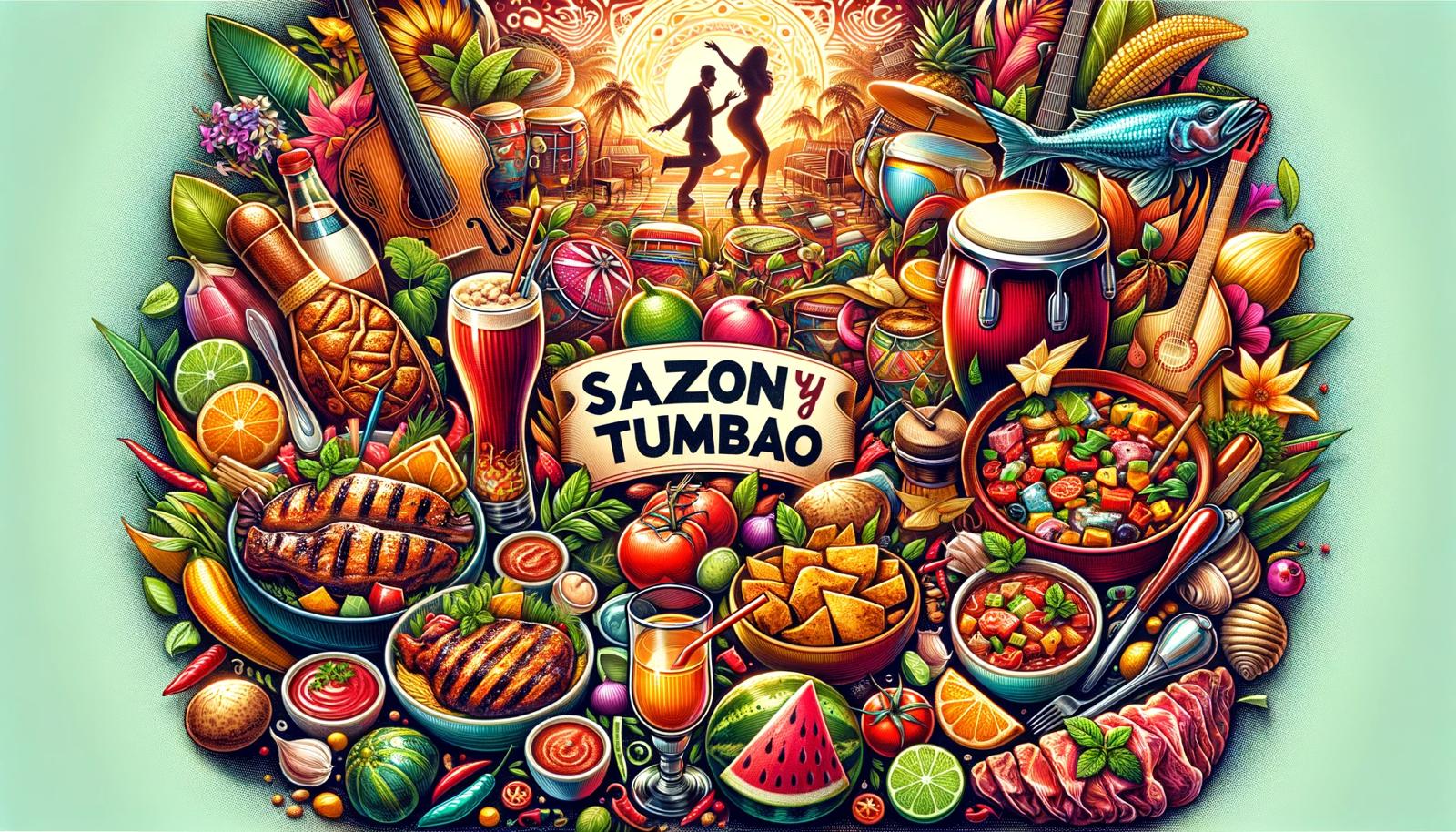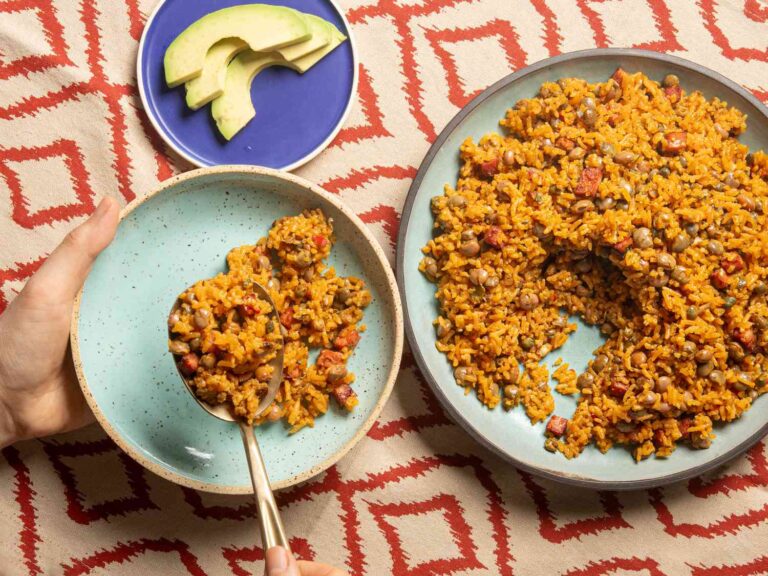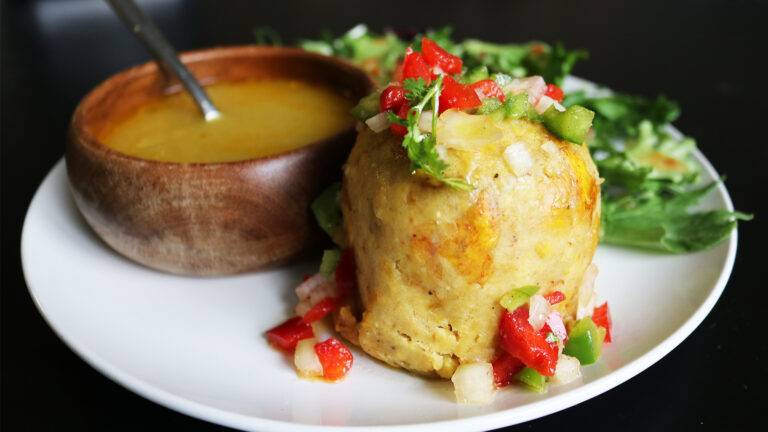We are about to embark on a culinary adventure where the vibrant zest of Jamaica meets the hearty comfort of Puerto Rican cuisine. Enter Jamaican Mofongo, a dish that’s about to redefine your taste buds. This fusion is not just food; it’s a flavor-packed journey.
Imagine the bold jerk spices mingling with the classic, garlicky goodness of mashed plantains. It’s a combo that promises to be as exciting as it sounds. And let me tell you, by the end of this article, you won’t just be reading about it – you’ll be itching to try making it yourself! Stick with me, and let’s dive into this tantalizing twist together.
What nationality is mofongo?
Mofongo is proudly Puerto Rican! It’s a beloved dish in Puerto Rico, deeply rooted in their culture. The main ingredient is green plantains, which are fried, then mashed with garlic and various mix-ins, often including pork cracklings or bacon. It’s not just a dish; it’s a part of Puerto Rican heritage.
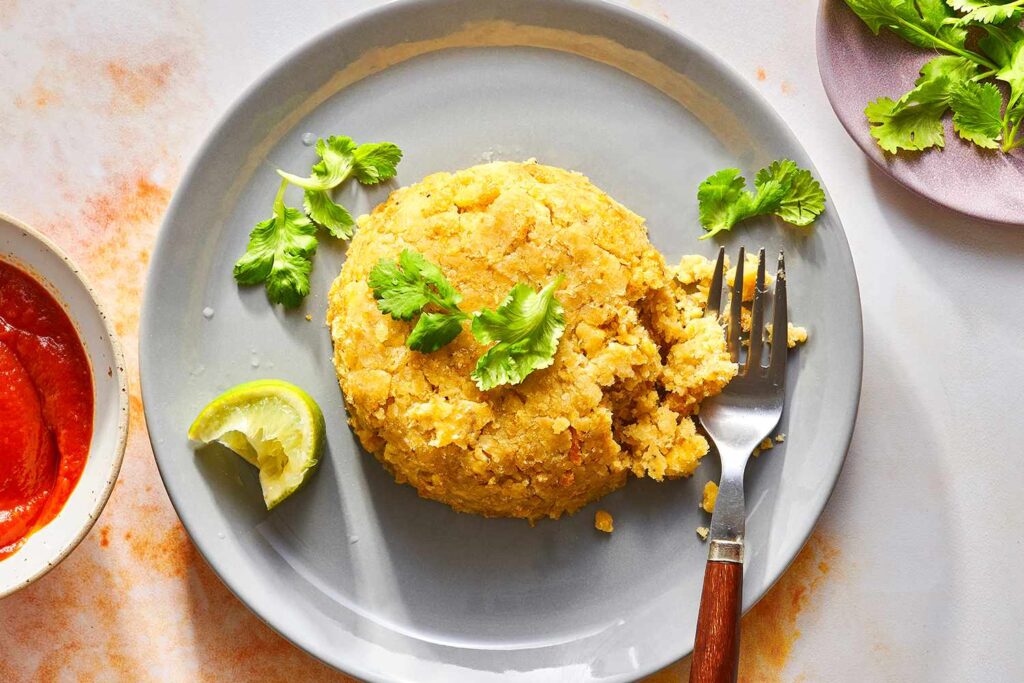
Mofongo has roots in African cuisine, a legacy of the African influence in the Caribbean. It’s versatile too – you can find it paired with a variety of toppings like shrimp, chicken, or vegetables. In essence, mofongo is a beautiful blend of history, culture, and deliciousness, all rolled into one iconic Puerto Rican dish.
What is Jamaican mofongo?
Jamaican Mofongo isn’t a traditional dish in either Jamaican or Puerto Rican cuisine, but it’s a fascinating concept of culinary fusion. Picture this: you take the classic Puerto Rican mofongo, known for its mashed green plantains, garlic, and often pork, and then give it a Jamaican spin.
How? By infusing it with distinct Jamaican flavors. Think about seasoning the plantains with a jerk spice blend, which could add a smoky, spicy kick. Or imagine mixing in some traditional Jamaican ingredients like ackee, saltfish, or even a bit of coconut for a tropical twist.
This fusion would create a dish that’s hearty and comforting like mofongo but with the bold, vibrant flavors Jamaica is famous for. Jamaican Mofongo could be a delightful way to celebrate and blend the culinary traditions of both cultures. It’s a dish that’s not just about eating; it’s about experiencing a blend of cultures on your palate.
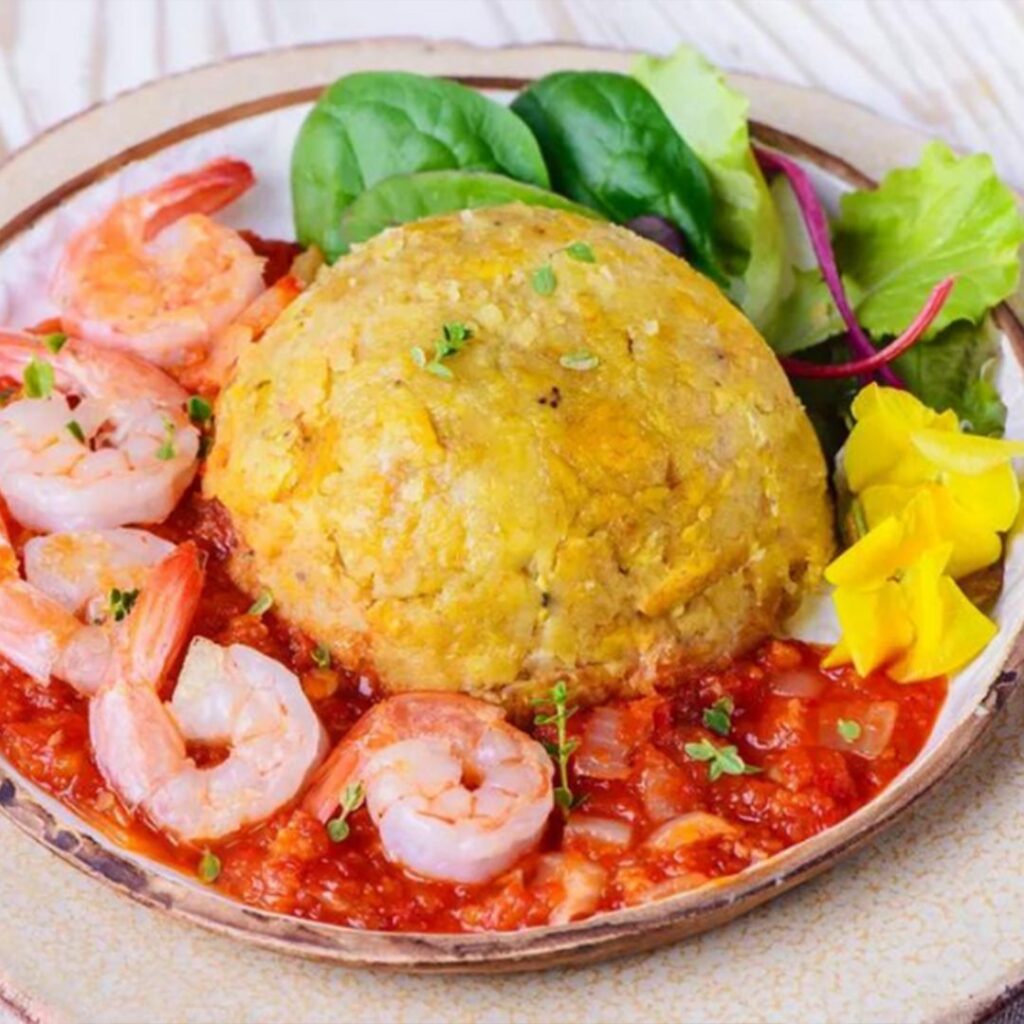
What is Jamaican Mofongo Made Of?
Jamaican Mofongo, as a fusion dish, would blend ingredients and flavors from both Jamaican and Puerto Rican cuisines. Let’s break it down:
- Base: Traditional mofongo starts with green plantains, fried and then mashed. This is the heart of the dish.
- Seasoning: To infuse the Jamaican flair, the plantains could be seasoned with jerk spices – a mix of allspice, thyme, scotch bonnet peppers, garlic, and other spices. This would add a spicy, smoky depth to the base.
- Mix-ins: In Puerto Rico, mofongo often includes pork cracklings. For a Jamaican twist, consider adding diced saltfish or ackee, which are staples in Jamaican cuisine.
- Sauce: Instead of the traditional garlic sauce or chicken broth, you might opt for a sauce made with coconut milk, adding a creamy, tropical element to the dish.
- Protein Pairing: While mofongo can be a meal in itself, serving it with a side of jerk chicken or curried goat could elevate it to a full, hearty meal, perfectly blending the two culinary worlds.
The beauty of Jamaican Mofongo lies in its flexibility – there’s room to experiment and tailor it to your taste, celebrating the richness of both cultures in every bite.
How to Make Jamaican mofongo Recipe
Making Jamaican Mofongo is a creative adventure, blending the traditional Puerto Rican mofongo with the vibrant flavors of Jamaica. Let’s dive into this delicious recipe:
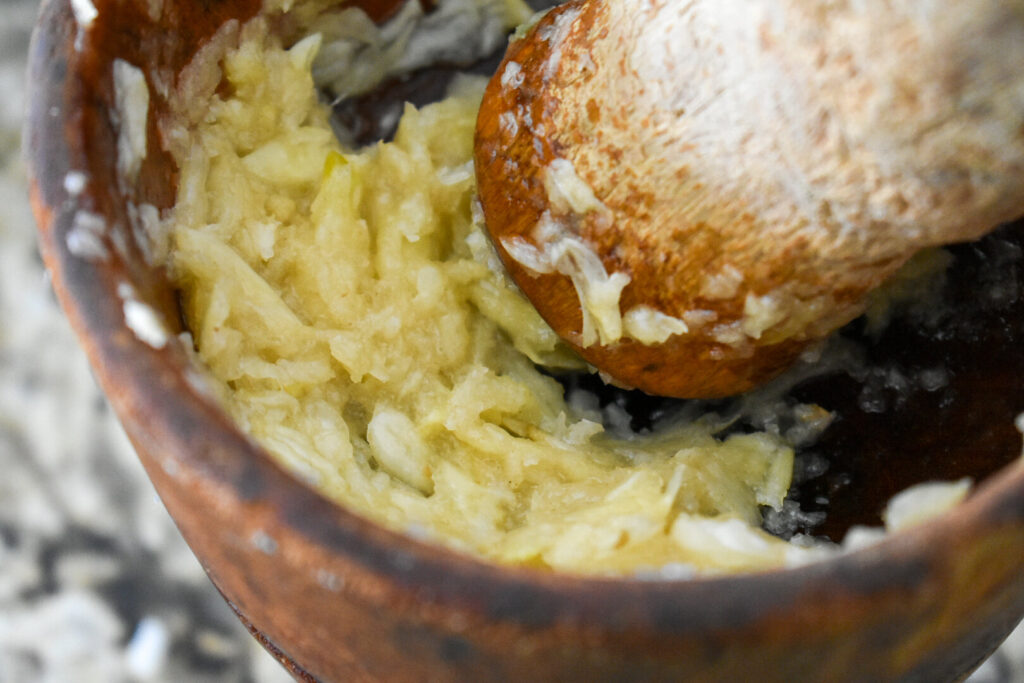
| Level: Intermediate | Total Time: 45 minutes |
| Prep Time: 15 minutes | Yield: 4 servings |
| Cook Time: 30 minutes | Total Calories: approximately 400-600 calories/serving |
Ingredients:
- 4 green plantains
- 1-2 tablespoons jerk seasoning (adjust to taste)
- 4 cloves garlic, minced
- 1/2 cup pork cracklings or bacon bits (optional)
- 1/4 cup olive oil or coconut oil
- Salt to taste
- Optional: 1/2 cup cooked and flaked saltfish or ackee
- For serving: Jerk chicken, curried goat, or a sauce of your choice
Instructions:
- Prep the Plantains: Peel and slice the plantains into thick rounds. Sprinkle them with the jerk seasoning.
- Fry the Plantains: In a large skillet, heat the oil over medium heat. Fry the plantain slices until golden brown, about 3-4 minutes per side. Remove and drain on paper towels.
- Mash the Plantains: While still warm, mash the plantains using a mortar and pestle or a bowl and masher. Add the minced garlic and continue mashing. If using, mix in the pork cracklings or bacon bits, and saltfish or ackee.
- Shape the Mofongo: Once the mixture is coarsely mashed and well combined, shape it into balls or mounds.
- Serve: Serve your Jamaican Mofongo warm. You can top it with your choice of protein like jerk chicken or curried goat, and drizzle with a sauce if desired.
TIP: For a truly authentic flavor, try using homemade jerk seasoning and adjust the heat level according to your preference. Don’t forget to serve it with a protein like jerk chicken or curried goat to complete the meal!
Jamaican Mofongo is a tantalizing fusion dish that combines the traditional Puerto Rican recipe with bold Jamaican flavors. This dish features fried and mashed green plantains seasoned with jerk spices, offering a delightful blend of Caribbean culinary traditions.
Best Pairing for Jamaican mofongo
Jamaican Mofongo pairs exceptionally well with proteins that complement its rich and spicy flavors. Jerk chicken, with its smoky and fiery taste, is a top choice, enhancing the dish’s depth.
Alternatively, curried goat, a staple in Jamaican cuisine, adds a robust, aromatic element that melds beautifully with the mofongo’s textures and spices. These pairings not only elevate the dish but also provide a satisfying, culturally rich dining experience.
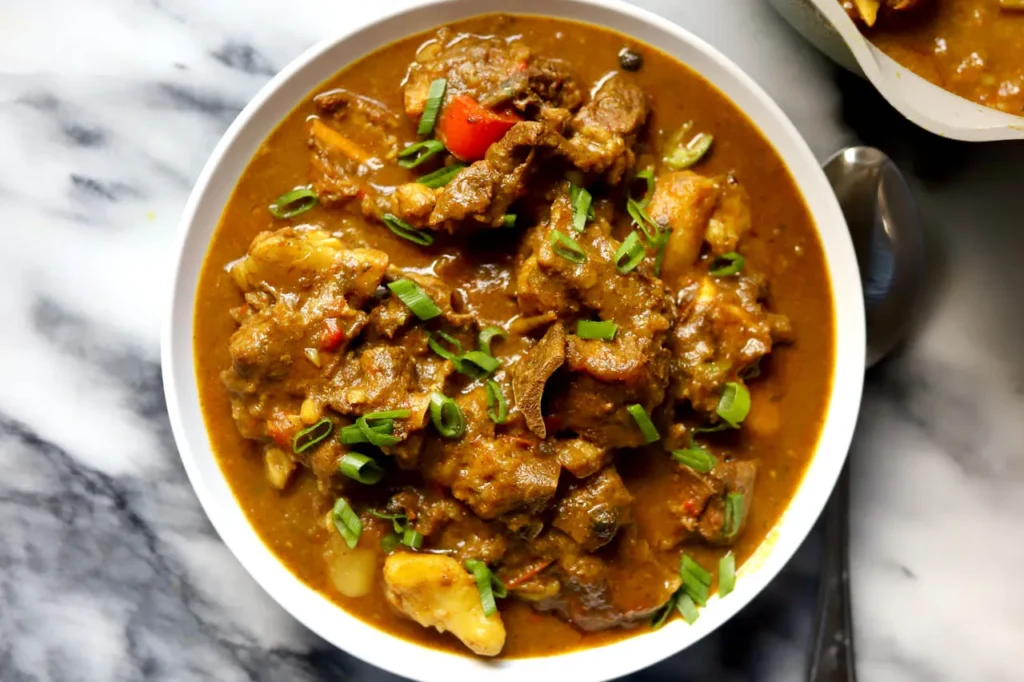
Alternatives & Substitutions
If you’re looking to tweak the Jamaican Mofongo recipe, there are several alternatives and substitutions you can consider:
- Plantain Substitute: If green plantains are hard to find, green bananas are a decent alternative. They have a similar texture, though the flavor will be slightly different.
- Jerk Seasoning: For a less spicy version, reduce the amount of jerk seasoning or use a mild spice blend. If jerk seasoning isn’t available, a mix of allspice, thyme, cinnamon, and cayenne pepper can mimic its flavor.
- Pork Cracklings/Bacon Bits Substitute: For a vegetarian version, omit these or substitute with crispy fried mushrooms or a vegan bacon alternative for that crunchy texture.
- Oil Substitute: Coconut oil can be replaced with other vegetable oils, though coconut oil adds a distinct Caribbean flavor.
- Protein Pairing: If jerk chicken or curried goat isn’t your preference, try grilled shrimp or a vegetarian option like spicy grilled tofu.
- Saltfish/Ackee Substitute: These can be omitted for a simpler version of the dish or replaced with other fish or vegetables like sautéed spinach or bell peppers for additional flavor and texture.
Conclusion
As we wrap up our journey through the flavors of Jamaican Mofongo, it’s clear that this dish is more than just a meal; it’s a vibrant fusion of cultures. Bringing together the hearty, comforting essence of Puerto Rican mofongo with the fiery zest of Jamaican cuisine, this dish is a testament to the power of culinary creativity.
With options to adapt it to various tastes and dietary needs, it’s not just versatile, but also inclusive. Whether you pair it with jerk chicken for a protein-packed meal or keep it vegetarian with spicy grilled tofu, each bite promises a delightful experience.
The key to Jamaican Mofongo lies in its flexibility and the joy of experimenting with flavors. It’s a dish that invites you to play with ingredients, embrace new combinations, and ultimately, revel in the rich tapestry of Caribbean culinary traditions. Happy cooking and even happier eating!
